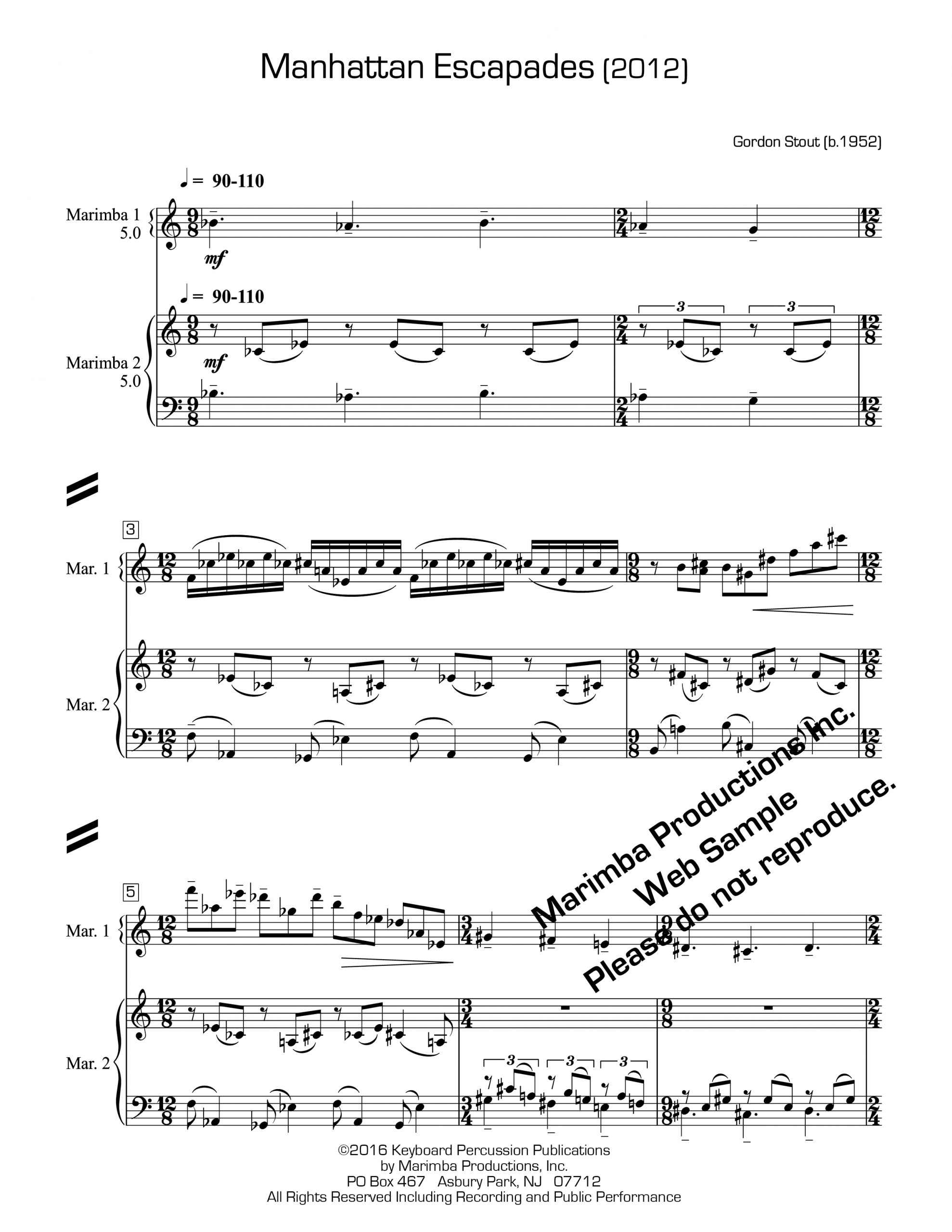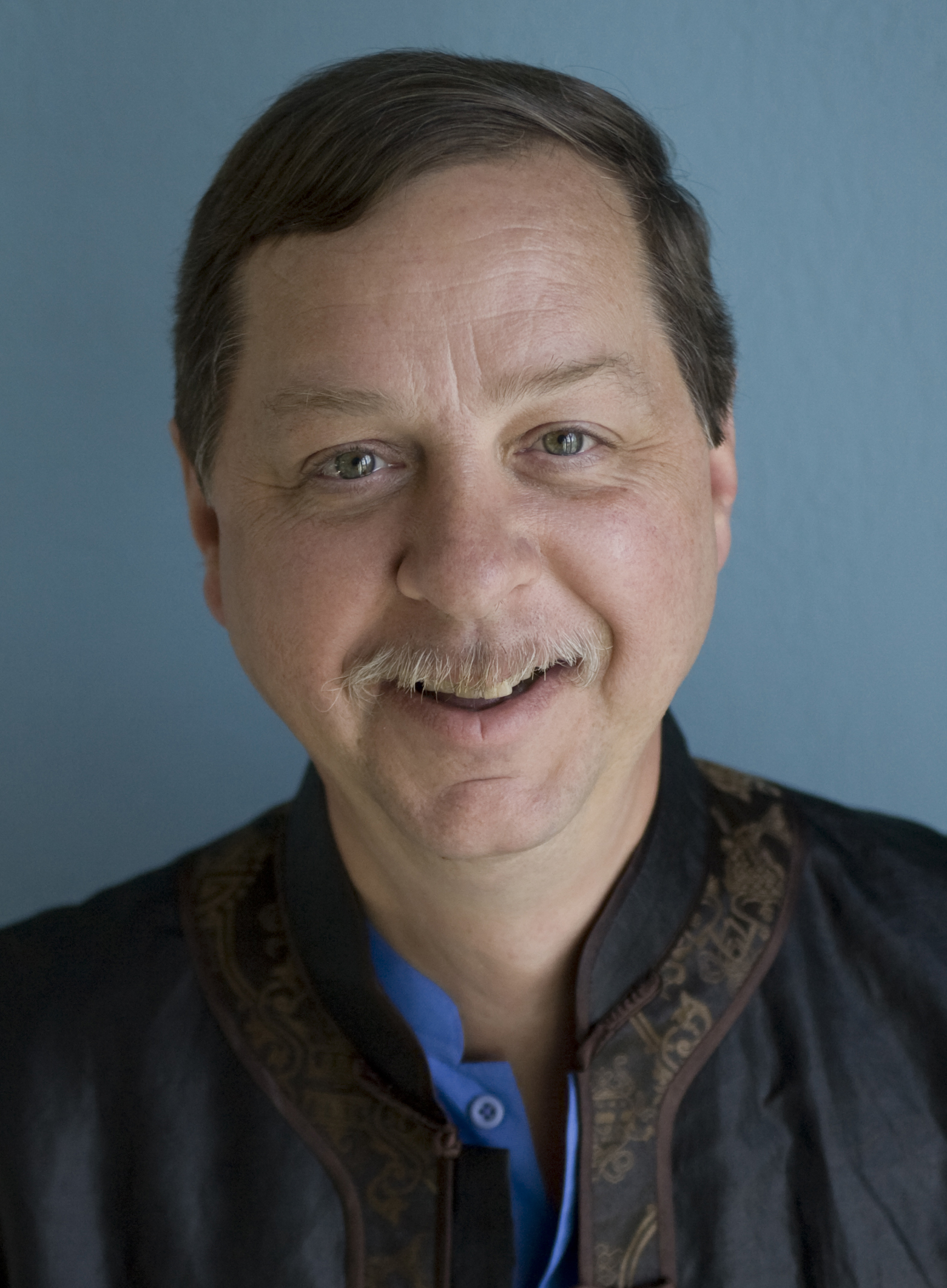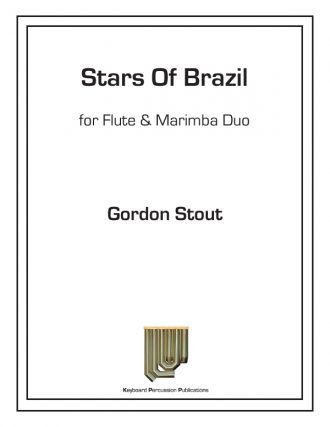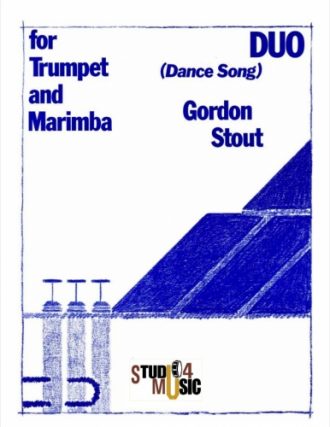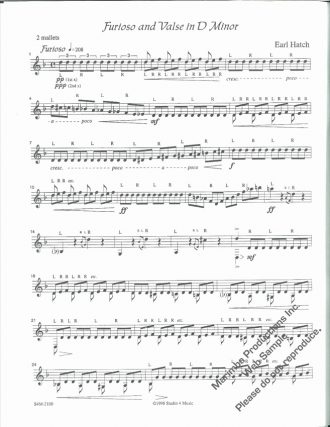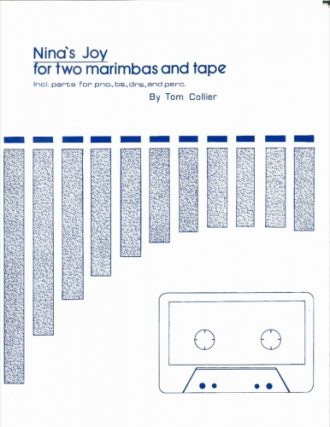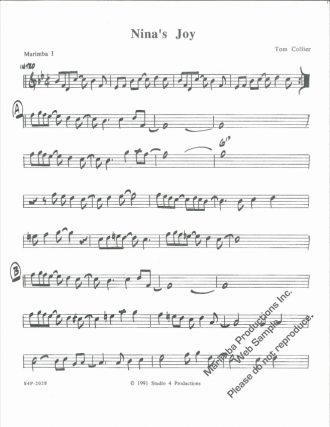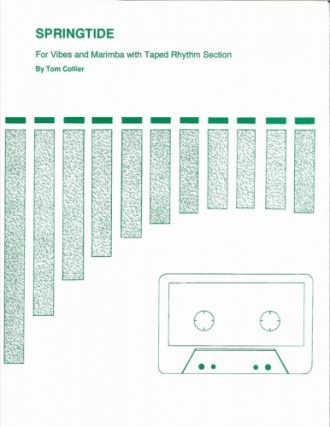Manhattan Escapades was written in 2012 for two marimbas, both requiring a 5.0 instrument. Premiered at Ithaca College in 2014 with Gordon Stout and Kate Burns (Vorel).
Includes a 32 page spiral bound score and 2 separate marimba parts.
Readers may be familiar with Stout’s duo “Skylark Orange Circles,” which has become popular over the last decate. By broad comparison, this work is similar in scope and difficulty, though less angular and more perpetually flowing. “Escapades” is set to a more regular metric grid than “Skylark” — composed with city blocks in mind, rather than the expanse overhead — yet retains the sponteneity that is Stout’s trademark.
At tempo, duration is just under ten minutes. The “escapades” are more than a casual jaunt; they are both sprint and marathon. The eighth-note pulse hovers at 200 to 220 bpm, and with few bars rest (not appearing until the end), you’ll be left breathless if not in great technical shape. The published parts are 14 and 16 pages, respectively, so page turns are a problem. Both players will need four mallets that can service the entire range of the instrument.
Stout’s rhapsodic nocture is through-composed. Rehearsal letters delineate the larger sections in the score, and recurring motives and modalities give listeners something to latch onto, guiding them through the dense metropolis of notes. The opening begins in a rather light-hearted manner. It’s rhythmically set in several compound triple meters with frolicking modulations and playful hemiolas. F-sharp is the most important pitch at the ouset (F-sharp minor and A major are oft-utilized modes). The beginning also has the clearest registral separation; part one remains high and part two holds the bottom. These distinctions get blurred in subsequent sections.
Journeying onward, the colors get darker and the harmonies are more brooding. After floating through F-sharp minor in the opening section, at rehearsal letter A we get new tonal material, alternating rapidly between half-diminished chords in F and E-flat, and then a sequence of dominant seventh chords that don’t resolve traditionally but move down by whole steps. At rehearsal B, we first hea gestures in 5/8 and 7/8, and then an important motive in 5/4 that recurs throughout the piece on different augmented chords. The minor-sixth interval is prominently voiced in these augmented triads, which also appear horizontally in rapid arpeggiation. Sometimes the arpeggios move in contrary motion, other times together. These chord sonorities are unforgettable, and percussionists familiar with Bob Becker’s music will instantly recognize that the same sounds appear in his raga-based compositions.
This music eventaully finds its way back to F-shar-minor pentatonic, and time goes from triple to duple feel. Both parts move in parallel motion at the interval of a major sizth. Linear, parallel writing at specific intervals occurs often. This technique, along with the augmented chords, deines the mood of the entire piece. Intervallic relationships take precedence over vertical harmonic concerns. Material from the B and C sections alternates in almost rondo fashion for several minutes as if weaving through traffic. At rehearsal D, a starkly contrasting interlude arrives. Soft, vertically constructed and fragmented, it reminds one of Stout’s angular writing from this popular “Dances.” It also reminds me of Daniel Levitan’s music: structured, pointed and rhythmically restless. Harmonic change occurs on mezzo piano or mezzo forte accents. Following the interlude is a rather episodic sectio, again using augmented chord intervals with brief solos, more interplay between parts and more parallel gestures, this time a perfect fifth apart.
The last two sections (rehearsal letters F and G) can be characterized as “four-hand” music, where the players interlock their unique patterns to create one composite groove. The sound is convincing when done well, but requires strict rhythmic execution. Stout includes ossia passages, perhaps anticipating rehearsal difficulties. The coda settles into A-augmented (A, C-shar, E, F) material, capitalizing on ambiguity by alternating rapidly betwen the E and F-natural to cloud the modalithy. It’s also heavy and foggy here, as both players work their way to the very bottom of the instruments. The parts start to relax rhythmically and dynamically, with brief respites, and finally the pulse comes to rest in A.
In summar, “Manhattan Escapades” is a difficult, intriguing work. To ensure success it is best attempted by graduate-level students or professionals (perhaps by younger, but more adventurous types). This is a duo for two advanced marimbists — performers who don’t have to think about mechancis and are very comfortable on the instrument. Just like its namesake, “Manhattan Escapades” is hip, daunting and never rests.
— Phillip O’Banion, Percussive Notes — July 2017


